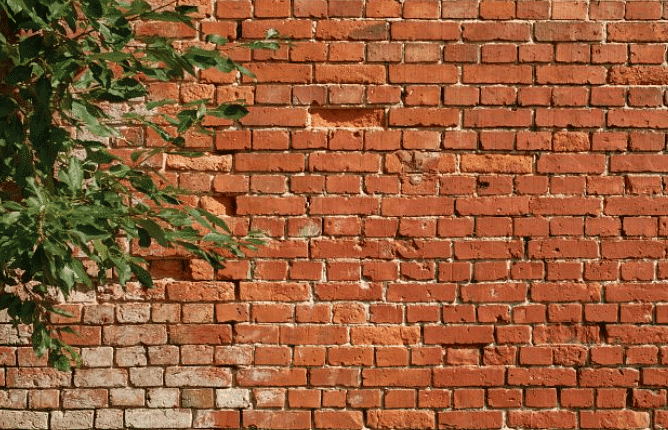UPSC Exam > UPSC Notes > Civil Engineering Optional for UPSC > Pointing in Construction: Meaning, Types & Advantages
Pointing in Construction: Meaning, Types & Advantages | Civil Engineering Optional for UPSC PDF Download
What is Pointing in Construction?
In construction, specifically masonry, pointing is the technique of filling gaps between bricks in brick walls and stones in stone walls with mortar. When done right, pointing can enhance the appearance of walls while also contributing to the longevity and durability of a structure.The mortar can be made from cement or lime. It is prepared by mixing lime or cement with sand and water in required proportions. Typically, a 1:2 or 1:3 ratio of lime/cement and sand is commonly used.

The Process of Pointing
Here's an overview of how pointing is done:- Rake Out Mortar Joints: Mortar joints are raked out, leaving a depth of 1 to 2 cm.
- Clean Joints: These joints are cleaned to remove loose mortar.
- Wet Joints: The joints are made wet.
- Apply Fresh Mortar: Fresh mortar is applied and pressed into the joints using a spatula or other tools.
- Cure Mortar: The new mortar must be allowed to cure for a few days. The number of days depends on the type of mortar used.
Types of Pointing in Construction
Pointing can be of various types, with each type offering a distinct appearance and benefit. The common ones are explained below:Flush Pointing
- Filling the raked mortar with fresh mortar flush between two bricks or stones.
- Results in a smooth finish and visually appealing wall.
- Eliminates spaces that can collect water and dust.
Recessed Pointing
- Filling the raked joints with mortar up to a certain depth, not all the way to the surface.
- A suitable tool is used to press the mortar to a depth of about 5 mm.
- Should be avoided in regions with heavy rainfall due to potential water accumulation.
Struck Pointing
- Mortar between the bricks is pressed to form an incline.
- A small trowel is used to create a recessed bottom edge.
- The brick below sticks out.
Beaded Pointing
- A concave-edged steel or iron rod is pressed into the mortar to create a beaded joint.
- Visually appealing but more susceptible to damage.
Tuck Pointing
- Filling the raked mortar with fresh mortar and creating a groove at the center.
- The groove is filled with white cement putty, leaving a small projection.
- Creates an aesthetic wall while also improving its life.
Keyed or Grooved Pointing
- Fresh mortar is pressed to form a flush point.
- A tool known as a pointer is used to create a groove in the mortar joint.
- The grooves lock the bricks or stones in place.
V Pointing
- Similar to keyed or grooved pointing but results in a V-shaped groove.
- A V-shaped tool is used to create the effect.
Weathered Pointing
- The upper edge of the mortar is recessed, creating a slope.
- Rainwater can drain down these walls quickly.
- The final look is that of a weathered building.
Advantages of Pointing in Construction
- Protection: It protects the mortar joints from weathering impact and other external elements.
- Sealing Gaps: Helps seal gaps between the bricks to prevent dampness usually caused by rainwater penetrating the walls.
- Strength and Stability: Adds strength and stability to the masonry structure.
- Aesthetics: Improves the appearance of walls.
The document Pointing in Construction: Meaning, Types & Advantages | Civil Engineering Optional for UPSC is a part of the UPSC Course Civil Engineering Optional for UPSC.
All you need of UPSC at this link: UPSC
|
352 videos|468 docs|2 tests
|
FAQs on Pointing in Construction: Meaning, Types & Advantages - Civil Engineering Optional for UPSC
| 1. What is pointing in construction? |  |
Ans. Pointing in construction refers to the process of filling mortar joints between bricks or stones in masonry work to improve the appearance, strength, and weather resistance of the structure.
| 2. What are the types of pointing in construction? |  |
Ans. The types of pointing in construction include flush pointing, weathered pointing, tuck pointing, ribbon pointing, and bucket handle pointing, each with its own unique characteristics and applications.
| 3. What are the advantages of pointing in construction? |  |
Ans. The advantages of pointing in construction include enhancing the aesthetic appeal of the structure, improving its durability and weather resistance, preventing water penetration, and maintaining the structural integrity of the masonry work.
| 4. How does pointing in construction contribute to the strength of a structure? |  |
Ans. Pointing in construction helps to strengthen the structure by providing additional support to the bricks or stones, reducing the risk of movement or displacement, and increasing the overall stability of the masonry work.
| 5. What is the importance of proper pointing in construction projects? |  |
Ans. Proper pointing in construction projects is crucial for maintaining the structural integrity of the building, preventing water damage, and ensuring the longevity of the masonry work. It also helps to enhance the overall appearance of the structure.
Related Searches















